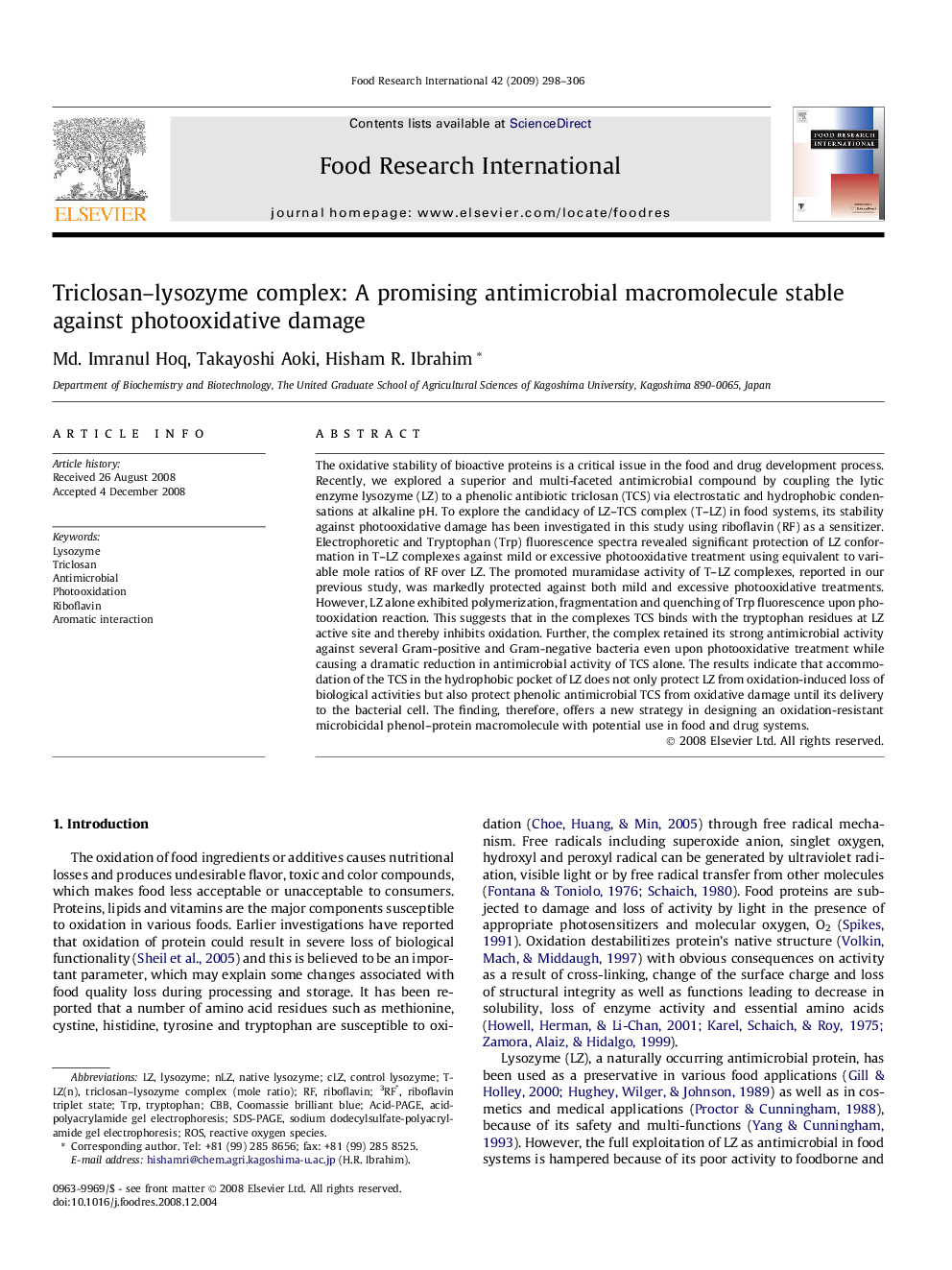| Article ID | Journal | Published Year | Pages | File Type |
|---|---|---|---|---|
| 4562886 | Food Research International | 2009 | 9 Pages |
The oxidative stability of bioactive proteins is a critical issue in the food and drug development process. Recently, we explored a superior and multi-faceted antimicrobial compound by coupling the lytic enzyme lysozyme (LZ) to a phenolic antibiotic triclosan (TCS) via electrostatic and hydrophobic condensations at alkaline pH. To explore the candidacy of LZ–TCS complex (T–LZ) in food systems, its stability against photooxidative damage has been investigated in this study using riboflavin (RF) as a sensitizer. Electrophoretic and Tryptophan (Trp) fluorescence spectra revealed significant protection of LZ conformation in T–LZ complexes against mild or excessive photooxidative treatment using equivalent to variable mole ratios of RF over LZ. The promoted muramidase activity of T–LZ complexes, reported in our previous study, was markedly protected against both mild and excessive photooxidative treatments. However, LZ alone exhibited polymerization, fragmentation and quenching of Trp fluorescence upon photooxidation reaction. This suggests that in the complexes TCS binds with the tryptophan residues at LZ active site and thereby inhibits oxidation. Further, the complex retained its strong antimicrobial activity against several Gram-positive and Gram-negative bacteria even upon photooxidative treatment while causing a dramatic reduction in antimicrobial activity of TCS alone. The results indicate that accommodation of the TCS in the hydrophobic pocket of LZ does not only protect LZ from oxidation-induced loss of biological activities but also protect phenolic antimicrobial TCS from oxidative damage until its delivery to the bacterial cell. The finding, therefore, offers a new strategy in designing an oxidation-resistant microbicidal phenol–protein macromolecule with potential use in food and drug systems.
